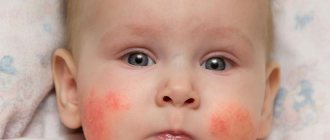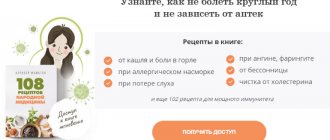Allergens are present in all areas of human life. Food allergy is one of the most common forms of desensitization of the body. A small child, whose main diet is adapted formulas, is especially susceptible to the development of such a pathological condition as an allergy to milk formula.
Reaction to the mixture
An allergic reaction in a newborn baby is a common occurrence in modern medicine.
Among the provoking factors are not only feeding mixtures, but also the fibers of the fabric from which the clothes are made, household chemicals for washing, pet hair, etc.
An allergic reaction is the response of the body’s immune system to various irritants that enter the body. These may also be components included in the artificial mixture.
The protein contained in mother's milk is similar to that of a newborn. For this reason, reactions to it occur in exceptional cases.
How many days does it take to appear?
According to many mothers, artificial nutrition as an allergen cannot cause a reaction after 2-3 months from the start of feeding the baby. This assumption is wrong. Symptoms can occur even after several months.
In most cases, the first clinical manifestations in newborns over 3 months of age occur on days 2-3.
In infants who are switched to artificial nutrition immediately after birth, symptoms appear only after several months due to the cumulative effect.
If a rash of unknown etiology is found on a child’s skin, you should not self-medicate, but should consult a pediatrician.
Only a doctor can find out the true nature of the rash and prescribe effective treatment.
If treatment is not timely, serious consequences arise, including the development of atopic dermatitis, chronic rhinitis, and bronchial asthma.
Reasons for the reaction
Skin rash and symptoms from other organs and systems occur against the background of a specific reaction of the child’s body to one or another component of the mixture.
This may be due to the following reasons:
- Underdevelopment and weakness of the mucous membranes in the gastrointestinal tract. Protein molecules that penetrate the walls of the stomach and intestines with the mixture are difficult to break down and are sent into the general bloodstream in the form of large fragments, which the immune system perceives as foreign elements, causing a reaction in the body.
- Insufficient activity of digestive system enzymes, which are responsible for digesting food entering the body.
- Development of dysbiosis and other disorders in the intestinal microflora.
- Weakened immunity, insufficient levels of natural immunoglobulins.
There are factors that predispose an infant to a reaction, including:
- a viral disease that a woman suffered during pregnancy;
- hereditary predisposition to pathology;
- being on artificial feeding from the first day of life.
If this is not possible, then your doctor will help you choose the right formula for feeding your baby. If a reaction occurs, the type of mixture is selected with an allergist.
Allergen mixtures
Allergies to formula milk in babies can be caused by various factors.
A specific reaction often manifests itself not only to the content of the product, but also to its quality, therefore it is recommended to approach the choice of artificial nutrition responsibly.
Preference should be given to products from reliable manufacturers.
In most cases, an allergic reaction occurs to the protein contained in the mixtures.
Immediately after its penetration into the child’s body, active production of histamine begins, a mediator of inflammatory processes arising from the skin, digestive tract, and respiratory system.
The intensity of clinical manifestations is influenced by the composition of the diet and the amount of mixture consumed.
Cumulative allergy
This allergy develops with prolonged use of baby food with ingredients intolerable to the baby. Even if the elements that provoke the reaction are excluded from the baby’s diet, manifestations of the disorder remain for another week or two. However, they will gradually fade away, and after a few weeks the child will become healthy again, and his skin will be beautiful and clean.
How does an infant's allergy to formula manifest itself? ↑
Parents should be especially attentive when transferring their infant to artificial or mixed feeding. Any mixture is a product of unnatural origin that can contribute to an allergic reaction. Pediatricians say that most often allergies appear in infants after the 2nd month of life, but the baby is not immune from premature signs. There is a widespread idea that allergies can be recognized by rashes on the skin. In fact, an allergic reaction to formula milk can manifest itself in several types of symptoms, including:
- gastrointestinal;
- respiratory;
- skin.
When a baby sucks the formula, he almost always burps; this is a natural reaction of the body. Moreover, regurgitation can occur with or without the mixture. If your baby spits up 1-2 times after feeding, this is normal. When we are talking about the number of regurgitations of about 5, and then the child begins to hiccup, then most likely it is an allergy. But before you panic, mom should inspect the pacifier, the hole in which should not be too large
In addition, you should pay attention to how the child eats, whether air gets into his gastrointestinal tract during feeding. If all the errors are corrected, but the newborn still spits up and hiccups, then it is best to contact a pediatrician
Another sign of an allergy is a runny nose with cough, while the baby’s temperature remains normal. This type of allergy is typical, but in life it is rare in infants. If problems with the respiratory system occur, you should immediately consult a doctor, since the child will not be able to cope with this on his own.
But the most common signs of allergies in a newborn are skin rashes. These are small pimples and redness. Moreover, the rash is diagnosed on all parts of the body: cheeks, arms, back, tummy, thighs. The baby’s behavior also changes; he becomes restless, irritable, and tries to scratch the area of the rash. Most often, scales form at the site of the lesion, and the skin becomes flaky. Upon tactile contact, dryness and roughness of the skin is felt
It is important for young parents to understand that it is unacceptable to use any cosmetic product on the affected area, including lotion or cream for babies. Each of these products contains chemical elements that can cause an even worse allergic reaction.
There are many reasons for allergies in infants. Initially, a hereditary factor should be considered: one or both parents suffer from allergic manifestations.
It is assumed that, while pregnant, the mother was exposed to a viral disease or was prescribed treatment with antibacterial drugs. Allergies often accompany babies born prematurely. Another reason may be the fact that the child consumed several different mixtures at once.
How to understand what exactly the mixture caused an allergy in the baby
If an allergic reaction occurs within a few hours or the next day after the first feeding, then it is easier for parents to suspect an allergy to artificial nutrition. And in the case when an infant develops a cumulative allergy to formula (2-3 months after the start of using artificial nutrition), a pediatrician and an allergist will help recognize the pathology.
The specialist’s task is to differentiate the type of allergy, since similar symptoms can be caused by the following:
- baby washing powders, creams, diapers;
- medications;
- lure;
- pet hair.
The fact that the baby has an allergic reaction to the mixture cannot be confirmed by taking an anamnesis alone; additional studies must be carried out.
Skin allergy testing is one of the most accurate laboratory methods for confirming or excluding an allergic reaction.
Replace your diet to improve your condition
I would like to know which mixture does not cause allergies. There is no universal nutrition; a lot depends on the child’s body. Basically, a negative reaction to nutrition appears in the process of using baby food containing cow's milk. When an allergy to one of the mixtures appears, you need to know what to replace it with. There are several requirements for this:
- Using a mixture with goat milk elements provokes personal susceptibility much less frequently. Of the most popular products of this variety, “Nanny” stands out. You should use products containing goat milk protein when there is a negative reaction to other formulas, for example, an allergy to the well-known types of formula “Nutrilak” or “Baby”.
- In certain situations, you can switch to baby food that contains probiotics. These substances are approved for use as a variety of auxiliary dietary supplements.
- During allergic symptoms, fermented milk mixtures are easier to digest. They contain milk proteins. Penetrating into the digestive tract, they improve the production of enzymes. As a result, they are better processed by the child’s body.
- There are certain food options for children that are made with soy milk. Quite rarely they provoke allergies, however, they contain fewer minerals and beneficial trace elements. In addition, such food for children is characterized by low nutritional value, so the baby is not satisfied with the usual volume of milk.
- Hypoallergenic mixtures. They are available from every manufacturer and are prepared on the basis of split protein. They are often easily absorbed by an unformed child’s body and do not cause a negative reaction.
- In the most difficult situations, if the above methods do not work, an elemental mixture is used. Includes amino acids that do not provoke a reaction.
Allergies: prevent and fight
Is it possible to avoid allergies if you use only the popular mixture “Malyutka 1” or the above-mentioned “Nutrilon”? It is believed that only those complementary foods that contain a hydrolyser can be truly effective. It is also recommended to take hypoallergenic products to minimize the risk of intolerance to the components of the mixture.
Hypoallergenic products contain a special protein. It provokes allergies much less frequently than conventional complementary foods, but an intolerance reaction is still possible. Doctors recommend purchasing medicinal options whenever possible - they are available in abundance in pharmacies. Preference should be given to reliable, proven manufacturers, although their products are significantly more expensive.
How to switch to another type of nutrition
Under no circumstances should you immediately remove the dairy food that caused the reaction and replace it with another.
The adaptation period should last at least 3 days, maximum 10-12.
Even if the baby has a strong reaction, introduce the new product gradually, replacing first one feeding (it is important not to make the mixture too concentrated), then two, etc. This will make it easier for your baby to get used to the new product and you are guaranteed to be able to track his reaction to it.
This will make it easier for the baby to get used to the new product and you are guaranteed to be able to track his reaction to it.
What to do if a child categorically refuses to take a bottle with new, unfamiliar food? The answer is still the same - be patient.
Never try to sweeten the mixture with honey, sugar, syrup or jam.
Try to reduce your concentration, and after a while offer your child the bottle again.
Don’t despair if it seems to you that your son or daughter is allergic to literally everything, and it’s your fault because you couldn’t feed your child with your milk.
Modern pediatric medicine and baby food manufacturers offer a fairly wide selection of tools and products with which you can find an alternative to solve any problem.
Drug therapy
As a rule, doctors prescribe for this category of patients:
- Safe antihistamines, third or fourth generation. Mothers should give such drugs to their children in the exact dosage determined by specialists. For infants, a form of medication is selected that corresponds to its age category, for example, suspensions, emulsions, syrups or drops.
- For skin lesions, experts recommend using medications intended for external treatment. For example, an ointment called “Fenistil”.
- If there are no contraindications, parents can take baths with healing infusions. For these purposes, you should use celandine or string grass, as well as oak bark. After the water procedure, the skin must be lubricated with a cream that has a softening effect.
- To eliminate irritation and itching, as well as dry out rashes, mothers can use special mash, which are prepared by some pharmacies.
Hypoallergenic mixtures
It is advisable for a child to switch to a hypoallergenic diet after preliminary consultation and under the vigilant supervision of the attending physician. When diagnosing an allergy and identifying an allergen, the doctor may prescribe such a mixture to the child. It is not recommended to use hypoallergenic formulas for feeding children on your own; this can even lead to slower weight gain and vitamin deficiency.
Hypoallergenic mixtures contain split animal (cow, goat) or vegetable (soy) protein. Thanks to special processing, the likelihood of an allergic reaction is significantly reduced.
Hypoallergenic mixtures are divided according to their purpose:
- Mixtures for the prevention of allergies (prescribed when there is a risk of hereditary development of allergies in a child or mild symptoms. The protein particles are large, high nutritional value and high content of active substances)
- Therapeutic and preventive baby food (prescribed for moderately severe allergy symptoms. Protein particles are crushed, average nutritional value and moderate content of vitamins and active substances)
- Mixtures for treatment (this food is prescribed for severe allergies and their consequences. They have a healing effect on the functioning of the digestive system, restoration of intestinal microflora, treatment of skin rashes. Protein particles are crushed as much as possible or the protein is replaced by a set of amino acids, the nutritional value is low)
Hypoallergenic formulas are recommended by doctors for the first feeding of a child. This allows you to monitor the body’s reaction to milk protein and avoid a strong allergic reaction. When choosing baby food, you should know the basic properties and composition of a hypoallergenic mixture. 1 liter of ready-made baby food should contain 12-15 grams. protein, 7-8 gr. carbohydrates, the proportion of whey proteins is at least 60-80%, fats must be easily digestible.
Recommendations for artificial nutrition of children:
- It is recommended to give prophylactic formulas to newborn children.
- When switching from another type of formula to a hypoallergenic one, you should gradually replace one food with another over 10-15 days.
- It is advisable to give hypoallergenic mixtures with vegetable protein to children aged six months and older.
- The results of the nutrition replacement can be seen 25-30 days after the start of use. A suitable mixture will relieve the child of discomfort, skin rashes, and normalize stool and digestion.
Important!
If a child requires artificial nutrition, the choice of formula must be taken seriously. It is advisable to consult a pediatrician. The health and proper development of the child will depend on the correct choice of formula.
Infant formula without milk
If the doctor has revealed that the cause of intolerance lies in milk protein, this is not yet a reason to refuse complementary foods. It is enough just to exclude animal products (milk) from the child’s diet. Special mixtures based on soy protein come to the rescue. Its structure is different from products of animal origin, making the component easier to digest even at a very tender age.
At the same time, you need to understand that the soy mixture does not have a high level of adaptation, which means it cannot be used constantly. Usually the choice in favor of such complementary foods is made by the doctor, who also prescribes the frequency of use and duration of the course. You need to understand that you can also be allergic to soy protein. The frequency of its manifestation is quite high - up to 15% of all cases of use of complementary foods.
Allergy to beef and pork in infants: symptoms
Both adults and children can suffer from allergies to various types of meat. In infants, symptoms of such an allergy may appear if:
- nursing mother broke her diet
- Meat complementary feeding was introduced, and the child’s body is not yet able to cope with the new substances that have entered it
Meat complementary foods for infants should consist of hypoallergenic meats: rabbit, turkey, veal.
A baby may experience:
- disorders of the digestive system
- rhinoconjunctivitis
- dermatitis: rash in the form of hives
The most allergenic types of meat include pork, beef, and chicken. The least are rabbit and turkey. Therefore, it is better to start feeding infants with the latter. If you start complementary feeding with chicken, then you need to choose that part of the meat where there are fewer muscle proteins and blood vessels, that is, breast and other lean parts.
Treatment of facial allergies in infants
A qualified specialist should decide what to apply to an allergy-prone baby’s face. In this case, you should not self-medicate so as not to harm the baby’s sensitive skin.
Drug treatment
As a rule, if an allergy appears on the cheek of a baby, the doctor prescribes an antihistamine, corticosteroid or non-hormonal zinc ointment.
Antihistamine ointment is effective when a child’s face itches, that is, itching occurs and various rashes just begin to appear. This is Fenistil Gel.
With an integrated approach to treatment, combinations of antihistamine and non-hormonal zinc ointment, which has a drying effect, can be used. For example, Cicoplast, Zinocap, and Sudocrem is also effective for facial allergies in infants.
Sudocrem for facial allergies in infants has been used for a long time. Many mothers note its effectiveness, including using it as a diaper cream: they smear it on diaper rash and diaper dermatitis.
In more advanced cases, when the skin is already significantly damaged and the rash does not go away for more than 7 days, a hormonal (corticosteroid) drug is prescribed. However, its use is limited to a few days, since these drugs have a wide range of contraindications, especially when used in young children. Elidel, Advantan, Lokoid, etc. are usually prescribed.
The doctor should decide how to treat allergies in an infant. Using creams and ointments on your own may not give an effective result and, moreover, may only worsen the course of the disease.
For food and drug allergies in children from 1 month of age, an antihistamine in the form of drops is used - Fenistil, from 6 months - Zyrtec. For older children, tablets for facial allergies are prescribed: Zodak, Loratadine Teva, Suprastin.
Folk remedies for the treatment of facial allergies
Traditional medicine has been used to eliminate various skin rashes for many years. As a rule, herbal decoctions are used, which have an anti-inflammatory and antipruritic effect.
In order to prepare a decoction of calendula, string, chamomile, you need 30 grams. dry leaves or flowers, pour 200 ml of boiling water, leave for 20 minutes, then filter and add to the bath when bathing.
Also, you can wipe your baby’s face and body with this decoction before bedtime, applying it to a cotton pad.
Treatment
The therapeutic regimen is prescribed depending on the severity of the condition. In case of a mild form of allergy, the child is replaced with a hypoallergenic mixture, the choice of which is left to the doctor after accurately determining which components cause desensitization of the body. Drug therapy includes an oral antiallergic drug and local treatment with an antihistamine or antipruritic solution.
A special role during the treatment period is given to the baby’s personal hygiene. Thorough rubbing with clean warm water can be alternated with an anti-inflammatory solution of chamomile or string. Particular attention should be paid to the folds of the skin where the sweat glands are concentrated.
If the allergic reaction is not controlled with traditional treatment, the baby will require hospitalization and therapeutic measures under the strict supervision of a doctor. In the hospital, the child is given infusion solutions, which purifies the blood and significantly alleviates the patient’s condition. Antiallergic drugs are administered by injection. To relieve severe complications, a corticosteroid hormone, Prednisolone, is administered, which will prevent severe swelling, including of the larynx.
The next step will be strict adherence to the doctor’s recommendations for organizing the baby’s nutrition: choosing an adapted formula, introducing complementary foods. If you follow the prescribed treatment, allergic reactions disappear as you get older.
Causes of allergies to mixtures
The natural and most balanced nutrition for a newly born baby is mother's milk. But for a number of personal reasons or medical indications, milk can be replaced with artificial nutritional formulas. There are many reasons for this, from individual intolerance to breast milk by the child to its complete absence in the mother. When such a problem occurs, infant formula is used. The use of artificial nutrition for children requires parents to carefully select the formula, as it causes an allergic reaction in a fragile body.
The main causes of allergic manifestations in infants:
- The child’s internal organs are not yet fully formed (the digestive system is not perfect and does not produce the enzymes needed to break down food in the required volume, the intestinal microflora has not stabilized)
- The immune system of the child’s body is not fully formed (allergens easily enter the bloodstream from the digestive system and provoke the development of allergies)
- Heredity from parents (if the parents are allergic, the probability of its manifestations in the child reaches 40-75%)
- Overfeeding a child with formula, especially in the first months of his life (at this age, children cannot independently determine the right amount of food, which leads to regular overeating. As a result, an increased load is placed on the liver, stomach, intestines and other internal organs, which the body cannot cope with )
The composition of infant formula has a great influence on the development of allergies. Artificial flavors and preservatives used in the production of baby food can cause an allergic reaction. Also, most types of baby food contain cow's milk components (casein, lactose), which are poorly absorbed by the fragile digestive system and contribute to the development of allergies to baby formula.
Important!
To determine the allergen that caused the body’s negative reaction, it is necessary to be examined by a specialist and undergo a series of necessary tests.
In most cases, serious treatment is not required. As the child grows, his immune system and digestive system will become stronger, animal proteins (cow's milk), glutens and other substances that provoke the development of the disease will be actively broken down by the body and the allergy to formula will pass.
Allergy prevention
Ensuring the health of a little person is the concern of parents. Proper nutrition in the first year of life is important to ensure the health of not only the digestive system, but also other internal organs. Careful selection of suitable milk formula and timely introduction of complementary foods will ensure the baby’s rapid development and good mood.
There is no need to try to let your baby try tasty but forbidden foods for his age: chocolates, citrus fruits, condensed milk. A small pleasure can lead to big health problems in the future.
Symptoms and diagnosis
It is a mistake to think that the main manifestation of food allergies is skin rashes, since skin lesions are just one of the possible symptoms, in addition to which there are also:
- reactions from the gastrointestinal tract (excessive regurgitation, vomiting, colic, flatulence, unstable stools), leading to the occurrence of dysbacteriosis;
- change in the child’s behavior (restlessness after eating, refusal of a certain product);
- Respiratory disorders (rhinitis, apnea) are very rare, as are general anaphylactic reactions.
All of these symptoms are very similar to other allergic reactions that are not caused by food:
- contact dermatitis, which occurs only at the site of contact of the child’s skin with the allergen;
- allergies to medications;
- allergies to herbal teas and complementary foods.
Therefore, only a doctor who collects an allergic history, evaluates clinical symptoms, and conducts an allergological examination to confirm the diagnosis can finally draw a conclusion about the cause of the allergy. It consists of determining the level of specific antibodies - IgE IgG4 in the blood serum, performing skin tests, and provocative tests.
What to do?
If a baby does not have a severe allergic reaction to infant formula, then eliminating unpleasant symptoms can be done at home. If the disease is severe, emergency hospitalization will be required.
Mothers must strictly follow the recommendations of specialists:
- First of all, you need to eliminate the baby’s contact with the allergen as quickly as possible. To do this, you should stop giving the mixture that caused the pathological reaction and replace it with a hypoallergenic one.
- All hygiene rules must be followed. If your baby has extensive skin lesions, then you should not bathe him, as this may increase irritation. Water procedures should be replaced by wiping the body with wet wipes or a towel.
- Mothers should ensure that diaper rash does not form on the baby’s body.
- If an allergic reaction in a baby is accompanied by copious discharge of snot, which causes crusts to form in the nose, then they should be carefully removed along with the mucus.
- During the treatment period, foods that may intensify the pathological reaction should not be introduced into the infant's diet.
- It is not recommended to walk with your baby in direct sunlight.
- Experts prohibit the use of new creams to soften the skin.
What shall we do?
If you notice any of the above symptoms in your baby, do not under any circumstances find out the cause on your own, trying to exclude any allergens (dust, fur, flowers), listening to the advice of friends or relatives, or giving any allergy medications.
Consult your doctor. Only he, after examining the baby and prescribing allergy tests, will be able to accurately determine that the little one is allergic to the mixture. Or rather, on some of its components, and mixtures contain many of them. A child’s body can react, for example, to:
- - cow's milk protein when using formula (most often);
- - one of the components of the complementary feeding mixture (if you have already introduced it);
- - goat milk protein (much less common, but also found);
- - protein of fermented milk mixture;
- - soy protein dairy-free mixture, etc.
Sometimes an allergic reaction does not appear immediately, but after some time. For example, you treated your baby with the mixture for a month, and everything was fine, and then it started to fall off. And you, of course, won’t think about allergies (you’ve fed them more than once, everything was fine). Cumulative allergies (and that’s exactly what they are) last much longer than usual.
So, if an allergy is established, the next step is to treat it. The doctor will tell you what to do for this. He can prescribe antihistamines to your little one, which will reduce the severity of external manifestations. These may be suitable for your age:
To eliminate skin manifestations, your pediatrician may recommend:
- - ointments;
- - “talk bottles” (they are made in a pharmacy according to a prescription based on zinc, talc or diphenhydramine and are not stored for a long time);
- — herbal baths (chamomile, string);
- — adherence to hygiene rules (do not pick up the baby with unwashed hands, do not actively dry him with a towel after bathing, so as not to damage the rash, if it is profuse, put on “scratchies” and swaddle him so that he does not comb himself, clean his nose from mucus and crusts).
In addition, dear mothers, remember that relieving symptoms alone will not solve the problem. If the baby continues to receive the mixture, the reaction will not go away. Therefore, the doctor will recommend that you replace the mixture that caused the negative reaction with another that does not contain the identified allergens. This will be a hypoallergenic or adapted mixture.
For example, “Nestozhen”, “Nan” or “Baby”. They contain special components that are “facilitated” for digestion by a weakened body. But let me remind you that he will select them for you only if he knows exactly the specific allergens.
Once again I want to remind you: there is no need to show any initiative in trying to identify the cause of any symptoms (even if these are not allergic signs) - you can only harm a tiny, fragile body.
I already told you once that for mothers of infants there are no unimportant problems. Don't be afraid to bother your pediatrician for the sake of your baby's health and well-being. His good appetite, sound sleep, and proper development will be your best reward.
Ventilate the room more often, walk more in the fresh air with the fry, give it air baths, and do not introduce complementary foods ahead of time. This will help the little body get stronger faster and resist not only allergies, but also many other diseases.
That seems to be all for today. If I missed something, don't hesitate to ask questions. I would be glad if you share your own experience: what were you allergic to, how did you fight it, how did you improve your immunity.
Your advice can also help young mothers not to get confused and not “panic” with or without reason. Tell your friends about my blog who might find my advice useful - I will be grateful to you. Goodbye, my dears!
This article is worth sharing.
Some treatment features
What to do? What should I do? Such questions are often asked to the doctor by mothers of babies. Doctors may recommend switching to other mixtures that are unfamiliar to the baby’s body.
The transition is carried out with caution, only on the recommendations of a specialist
The purpose of any mixture depends on various factors: allergy symptoms, the age of the baby, and other factors. Basically, an important part of therapy is the exclusion of cow's milk protein, since it is this protein that often causes allergies in a child. The pediatrician must use an individual approach to each toddler. He can recommend mixtures:
- elemental (consisting of amino acids);
- fermented milk;
- whey;
- based on goat milk;
- hypoallergenic (they contain partially split protein);
- containing prebiotics, probiotics, which improve intestinal function, help increase the number of fermented milk bacteria necessary for normal intestinal activity.
Briefly about mixtures
In the 21st century, among the popular mixtures that have a positive effect on the gastrointestinal tract of babies, they help break down protein into amino acids:
- Nan;
- Hipp (HIP);
- Nestozhen;
- Agusha;
- Nutrilak;
- Nutrilon, etc.
Let's look at a brief description of several mixtures. Nestozhen is produced in Switzerland by the world famous company Nestle. Nestozhen helps get rid of constipation, improves the digestion process, contains prebiotics, iron, zinc, and is prescribed to healthy babies who have not been able to feed on breast milk since birth. The mixture is rich in fatty acids, microelements, and vitamins.
The protein component, which is an important component of this diet, is close to the protein composition of mother's breast milk. But, still, do not forget: breast milk cannot be replaced with anything. If we talk about another popular mixture, it is produced in countries such as Hungary and Austria. We are talking about the Hipp mixture. It is also manufactured for healthy babies when breastfeeding is not possible.
But special mixtures have also been developed for small babies who have impaired functioning of the digestive system. These ailments include colic, constipation, and bloating. Each food has its own age restrictions. Therefore, remember, any mixture, Nestozhen, Hipp, etc. must be prescribed by a doctor individually.
Look at the photo, remember how the allergy manifests itself. Self-medication is a dangerous method of therapy! If symptoms of this disease occur, you know what to do - take your child to the hospital on time.
Enforcement versus inaction
Let's see what to do if a child is allergic to a new formula. You should choose one of the options, taking into account the severity of symptoms:
- The presence of excess weight and regurgitation with a skin rash is overfeeding. It is necessary to reduce the daily and single dosage of feeding to the recommended volumes for this age. If the baby is used to eating in large quantities, complementary foods are diluted. This significantly reduces the load on the gastrointestinal tract, reduces fermentation and rotting, and allergic manifestations.
- When the rash on the skin due to the mixture is moderate or not pronounced, complementary foods should be changed. It is advisable to opt for fermented milk or those that contain probiotics. Eating such food has a beneficial effect on the proliferation of beneficial bacteria in the gastrointestinal tract, which helps improve digestibility and reduce symptoms.
- The allergen (cow's milk protein) should be removed from the baby's daily menu. This can help when the above methods did not help eliminate the pathology or when the symptoms are extremely pronounced.
If a baby shows a reaction to artificial nutrition, you need to think about what to feed him. You can remove the allergen using the following methods:
- Switching to a diet based on goat milk. It is considered optimal because goat milk proteins are superior in nutritional value to cow milk proteins. At the same time, they differ significantly in structure from each other, which will become an alternative if you have symptoms of other milk. The disadvantage is that allergies can also occur to such food.
- Use of soy nutrition. This used to be the most popular option, but is not widely used at the moment. The soybean version is used directly for feeding infants with a reaction to the first 2 methods, since structurally plant-based proteins have significant differences. Soy protein has lower nutritional value and is less processed. The risk of pathology reaches 12%.
- Switch to a hypoallergenic mixture. For many kids, this option will be optimal.
The transition to any kind of nutrition should be carried out in stages. This is done even with an intense reaction, since the baby needs to get used to an unfamiliar product gradually in order to avoid disruption of digestive processes, bowel movements, or usual refusal to take the product.
Not so simple
Often young, inexperienced doctors, and with them even more inexperienced young parents, do not know that the cause of allergies lies not only in protein intolerance. In some cases, such a reaction develops because the baby is fed mother's milk along with complementary foods, and the allergen enters women's breast milk from the mother's food.
In some cases, the reason lies not in the components from which the mixture is made, but in the amount of baby food fed to the child. Other parents feed the baby until he stops on his own. This leads to the fact that internal systems cannot cope with the volume of incoming artificial products, which provokes allergies.
Allergy to formula: what to feed
If a baby has been diagnosed with an allergy to an adapted milk formula, then the further selection of alternative nutrition should be approached very carefully. Experiments in this case are not appropriate and parents need to seek help from a pediatrician who will suggest the optimal replacement for the formula.
Hypoallergenic breast milk substitutes contain artificially broken down protein of animal (cow, goat) or vegetable (soy) origin. The likelihood of developing allergies is significantly reduced because they undergo multi-stage special processing.
The purpose of hypoallergenic mixtures can be different:
- Preventive mixtures for allergies. They are usually prescribed if the baby has a hereditary tendency to allergic reactions or if an allergy has already appeared and there are mild symptoms. Such mixtures have high nutritional value and contain a large amount of useful substances.
- Therapeutic and prophylactic hypoallergenic mixtures. They are prescribed if the symptoms of an allergic reaction are of moderate severity. They have average nutritional value and a sufficient content of vitamins, as well as other useful substances.
- Medicinal mixtures. They are recommended for severe cases of allergies that occur with complications. They allow you to restore the intestinal microflora and cure skin rashes. The protein in them is crushed as much as possible or replaced with a set of amino acids. Medicinal breast milk substitutes have low nutritional value.
Soy mixtures are used quite rarely and for a short time until the acute symptoms of an allergic reaction are eliminated. This is due to the fact that they have low nutritional value and are not as tasty as dairy products, so a third of children react negatively to such nutrition.
General rules and effective treatment methods
If the symptoms are mild, you should contact your pediatrician for possible nutritional adjustments and a change in formula.
Note! If the disease causes polymorphic symptoms in the infant, gastrointestinal distress, or respiratory distress, it is necessary to immediately call doctors to exclude anaphylactic shock.
Elimination of skin manifestations
An allergic rash causes severe itching and a desire to scratch the skin. To prevent your child from damaging his skin and causing a bacterial infection, you can put soft mittens (anti-scratch mittens) or blouses with closed sleeves on his hands. Before handling your baby, you should wash your hands thoroughly with soap.
To eliminate inflammation and itching, use local remedies:
- Elidel (from 3 months);
- Bepanten;
- Wundehill;
- La Cree.
If non-hormonal ointments are ineffective, the doctor may prescribe a short course of corticosteroids. It must be taken into account that such drugs affect the functioning of the adrenal glands. Therefore, their use should be carried out under the full supervision of a pediatrician. Infants from 4 months can be prescribed the more gentle Advantan ointment. It contains synthetic hormones in minimal quantities, so absorption through the skin is negligible.
Helping your child with respiratory symptoms
If the allergy is accompanied by shortness of breath or breathing problems, then the help of a specialist is necessary. If your baby has allergic rhinitis, you need to ensure proper care of the nose and regularly remove accumulated mucus to make breathing easier. To do this, you can use a syringe or a syringe without a needle.
Symptoms
For this reason, monitoring symptoms falls entirely on the shoulders of the parents. Since the immunity of infants is unstable and weak, signs of allergies can be very extensive. They often overlap closely with symptoms of other diseases.
As a rule, the body’s first reaction to a food allergen appears in babies within 2-4 hours after the “meal”. The most common symptoms of an allergic reaction:
- redness spreading from the face to the stomach, shoulders, back and buttocks;
- rash that covers the face, arms, buttocks;
- regurgitation;
- empty burp;
- diarrhea (less commonly, constipation);
- bloating and colic.
With an advanced form of allergy, respiratory manifestations begin. They are expressed in swelling of the larynx, wheezing, cough, and runny nose. At the same time, the rash gives way to blisters, which itch and sometimes hurt.
Increased temperature and enlarged lymph nodes are observed quite rarely, usually in advanced cases. When such symptoms occur, it is necessary to consult a doctor: the allergy is very strong, it can be associated with associated infectious diseases, almost complete inability of the immune system and congenital pathologies. In addition, such signs can serve as a signal of anaphylactic shock, which is likely to be fatal for the baby.











